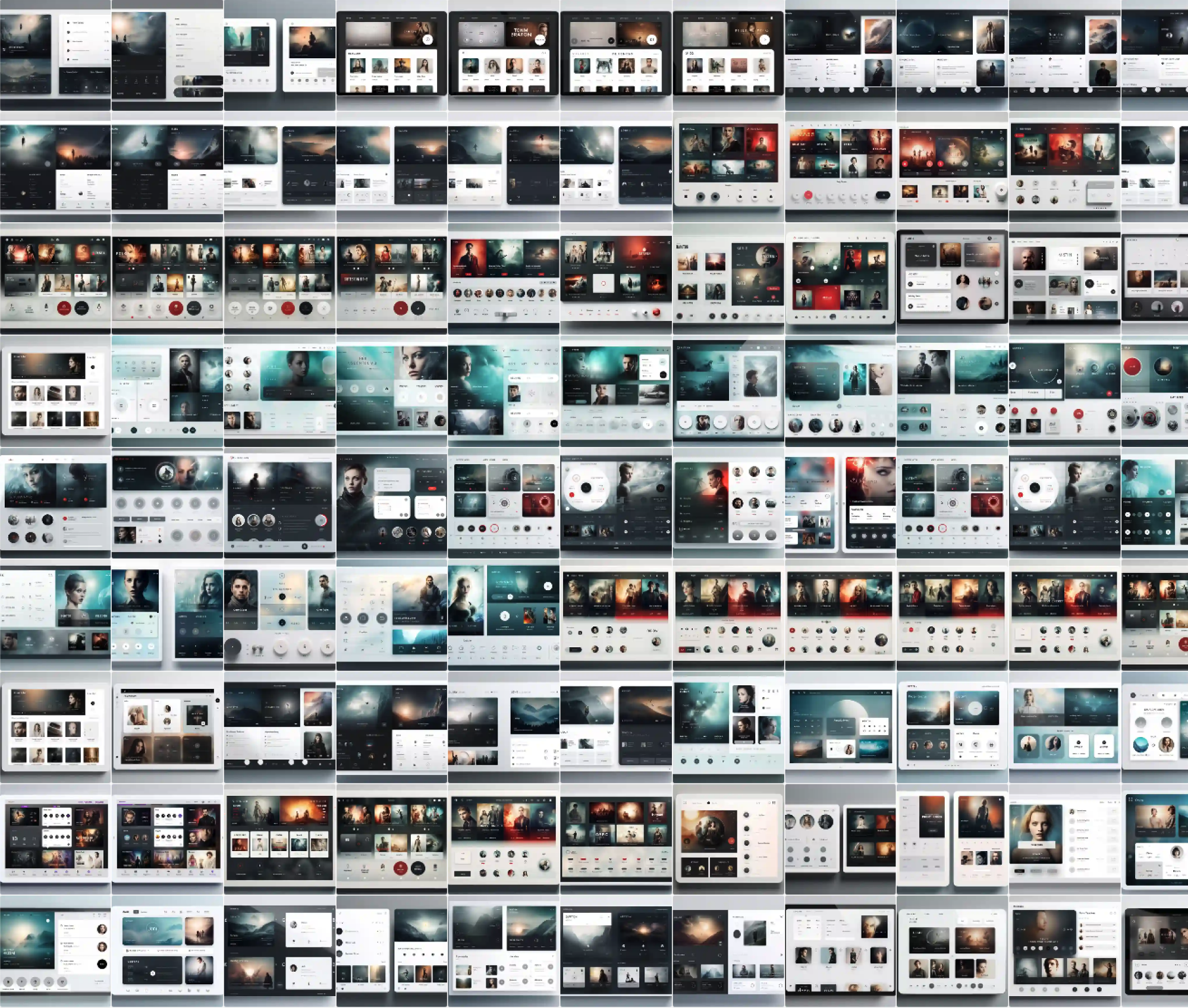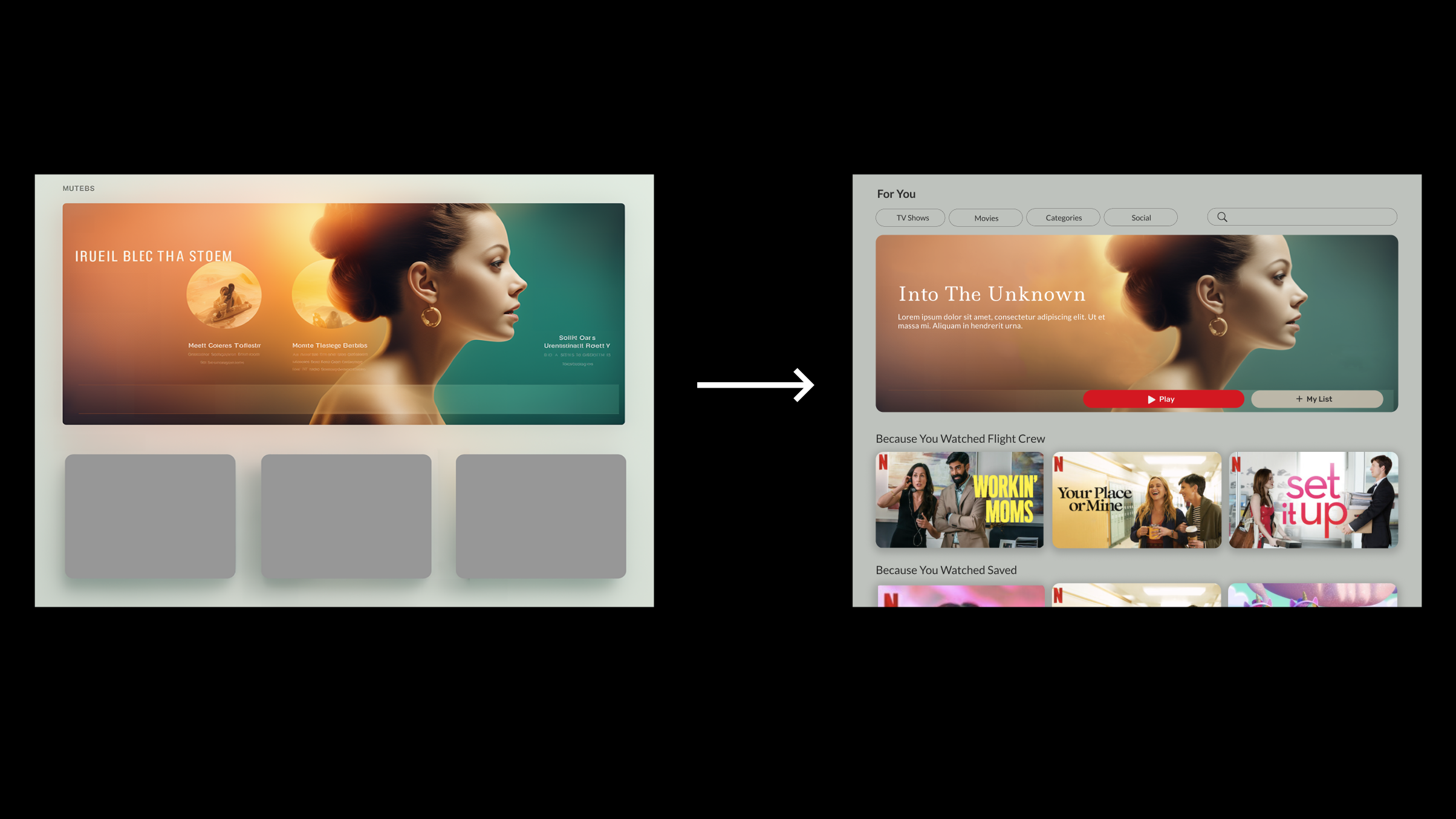Exploring Generative AI in Design: A Journey with Greg Aper
How can emerging AI tools redefine the boundaries of creative design and user experience?
My Role
GenAI Design Explorer (prompting + design)
Timeline
2 months
Tools
ChatGPT, Midjourney, Relume, Dall-E, Uizard, Wireframer Designer
Team
Greg Aper - Lead UX Designer
Lee O’Connor - Design Intern
Stefan Navarette - Design Intern
Overview
This project was under the direction of Greg Aper, at Superunknown Studios.
Greg Aper is a multidisciplinary designer, whose work focuses on “fusing human-centered methodologies with advanced deep learning tools to create a new paradigm of design techniques.”
Greg was very early to adopt GenAI techniques for design and explore how AI could assist design problems in the discovery and design phases.
He developed a systematic way of using LLMs and Generative AI softwares to enhance the UX Research and Design process, which he calls his “Master Framework”.
He lectures worldwide in order to help other designers with this step-by-step methodology.
Objective:
Research GenAI software/plugins and test them, in order to find ways to enhance and expedite the design + research process.
Deliverable:
Design mockups for presentation at Netflix workshop
Prompt Exploration
For the Netflix project, we experimented with prompting in MidJourney to generate unique design concepts for individual screens. Through this process, we refined our understanding of how to craft and adjust prompts for better results.
Each rendering brought noticeable changes. It was interesting to see how designs evolved based on factors like descriptors, software versions, and incorporated reference images.
We also collaborated by sharing prompts and iterating on each other's work. If a particular prompt showed promise, we explored it further, and at times, we even combined multiple prompts to enhance the final outcome.
GenAI Designs
Here are a few of my designs that I created based on Midjourney renderings.
The Midjourney screen is on the left, and then my version on the right.
I pulled color schemes, content and icon orientation, line elements, and basic compositions from the Midjourney renderings.
In addition to generating designs for the VOD app interface, we also worked on generating imagery for personas, during the research phase of the project.
Below are a few examples of Midjourney renderings I created for a range of personas for a video-on-demand app -->
Project Prompt for ChatGPT:
”Create user personas for each of the following user archetypes (from internal document provided by company) that would be ideal users for the product described in the following objective statement (insert objective statement).
Include a biographical 3 sentence description, name, job, age, city in the U.S., and personality characteristics. Create a number lists for 3 goals, 3 needs, 3 challenges, and 3 opportunities that are relevant to the objective statement. Make the users demographically and ethnically diverse.”
Key Learnings (as of February 2025)
I found that Midjourney was the best AI software for generating realistic, photographic images for persona development, as well as a helpful creative tool for ideating UI designs. It far excelled over UIzard, Wireframe Designer, and Dall-E, in terms of image quality and design generation.
Integrating AI tools into the research and design process helped expand our capabilities, and enhanced our creative process. As the technology grows exponentially, we will see that it will be incorporated into every design team’s workflow and help not only the creative process, but will accelerate the delivery of the final designs.











